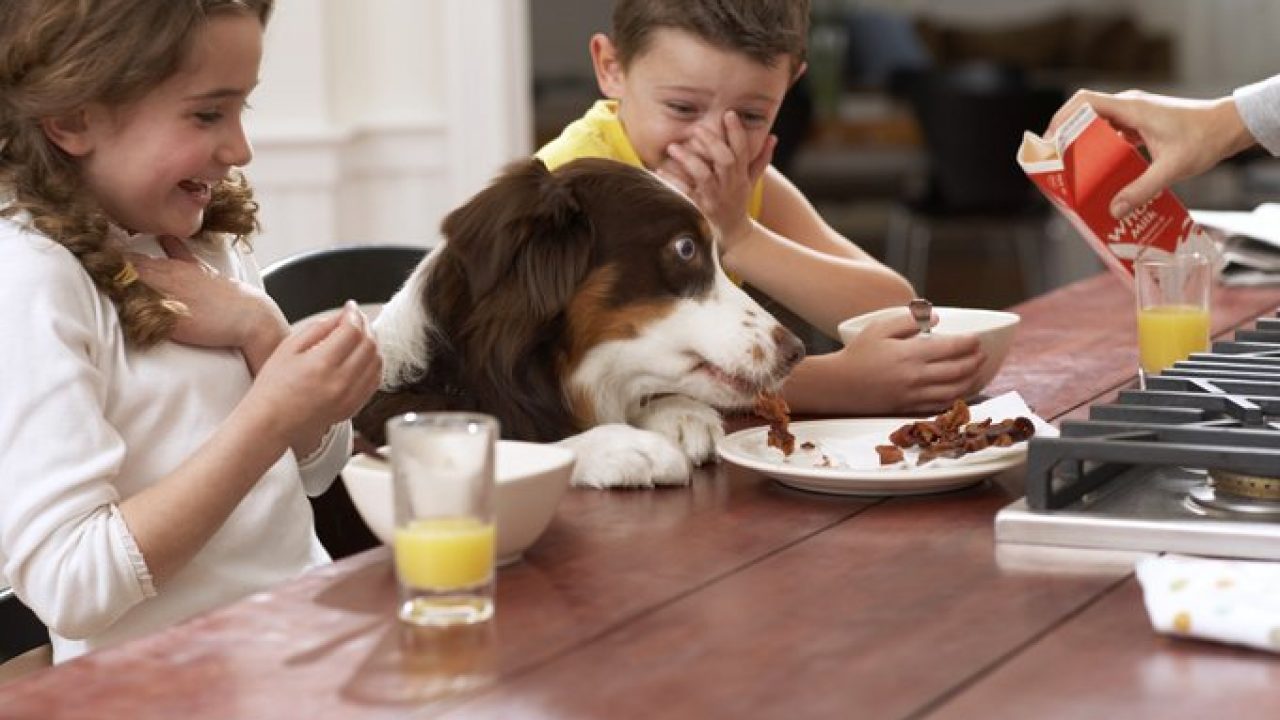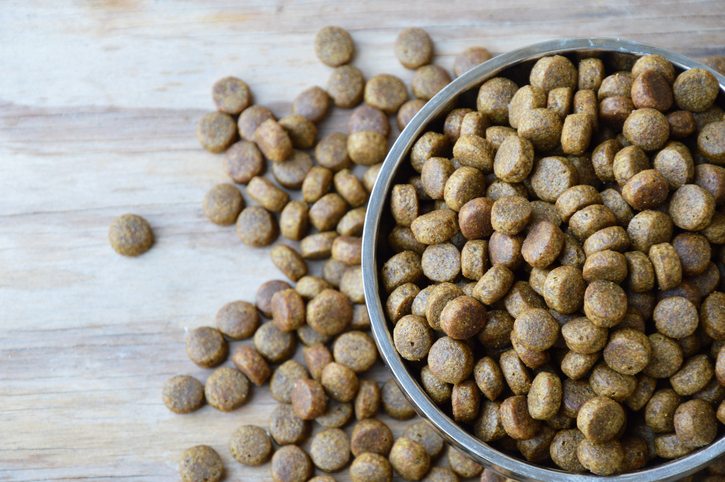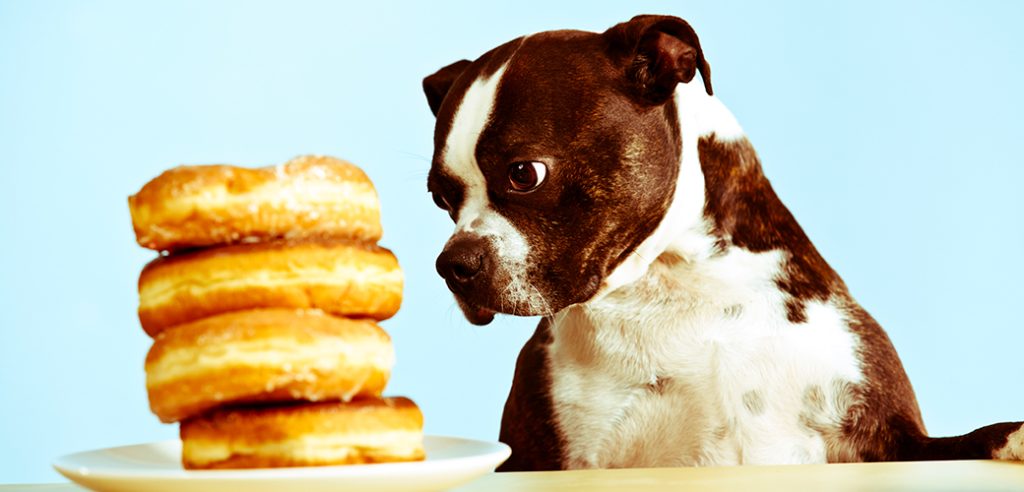Can I Feed My Dog The Same Food I Eat?

It’s rare to come across folks who can stand up to dogs. These fluffy balls of delight are man’s best companion, bringing endless joy into one’s life. Dogs are voracious eaters. They have a reputation for eating anything as long as it tastes good. They quickly become friends with their masters and do not hesitate to beg for their fair amount of food. Is it, however, healthy to feed them our food? Let’s see if we can figure out the answer in this article!
The Origins of Dog Food

Dog domestication is a fascinating topic. Dogs were one of the first tamed animals. Our four-legged buddies split from wolves around a hundred thousand years ago, according to their DNA.
Humans hunted down and killed other predators, including wolves. However, some friendly wolves may have hovered around humans to eat their leftovers. A link between the humans and the wolves may have formed. When dogs were initially domesticated, there was obviously no dog food. They used to consume human crumbs and leftovers. So, what went wrong?
In summary, throughout the course of a few thousand years, human society evolved and pet ownership became increasingly common. It became to be frowned upon to feed your dog leftovers from the table.
Empress Tzu Hsi of China began feeding her dogs rich foods such as shark fins, quail meat, and deer milk in the 19th century. The European monarchy had begun to give their canines exotic animal flesh and delicacies.
However, when the middle class prospered, specialised dog food, or dog food as we know it, appeared during the Industrial Age. Pets, particularly dogs, were considered luxury items at the time, and people aspired to flaunt their money by purchasing expensive canine breeds. James Sprat, an American businessman, produced a type of dog biscuit in the 1850s by combining wheat, barley, and vegetables with cattle blood. The biscuit was an instant sensation, and canned wet dog food was introduced to the market in the 1920s.
The Pet Food Institute funded and published a series of scientific studies in the 1960s to warn consumers about feeding their dogs garbage and leftovers. So there you have it, a little history lesson. Visit WeLoveDoodles if you want to learn more about dogs and their needs, including the best dog food for Yorkies.
For Your Dogs, the Safe Human Food

Dogs can consume human food, hence it is possible for them to do so. However, both quantity and quality must be taken into account.
They should avoid fast foods like cheese, hamburgers, and other deep-fried delights, as well as spicy dishes in significant amounts. Moderate consumption of these foods is recommended. Humans, surprisingly, should consume these foods in moderation as well.
A balanced diet of lean meat, veggies, and fruits, on the other hand, can be pretty helpful to your dog.
Flax seeds, green beans, eggs, pumpkin, peanut butter, carrots, various fruits, and sweet potatoes are some of the healthy diets for your dogs. It isn’t an entire list, but these foods will help your dog stay healthy.
Proteins, lipids, minerals, vitamins, and carbs are the top five nutrients to consider.
Although the foods listed above are rich in vital nutrients, you may need to combine them to meet your dog’s nutritional needs. It is where canine food comes in. They’re made by combining the exact proportions of all of the nutrients. For additional information about this, see Pumpkin.
Packaged foods have eliminated dog owners’ feeding headaches following their introduction to the market. Unique combinations tailored to the tastes and demands of various breeds are becoming increasingly popular, in addition to standard dog chow.
Whether it’s Yorkie or Rottweiler dog chow, you’ll find it all safely stuffed in packets. Shake a handful of food into a bowl and watch your adorable puppy lick its lips.
Dog Foods That Are Harmful

Because dogs digest food differently and have a different metabolism than humans, giving them certain human foods can be dangerous to their health.
The following are a few examples of products that are toxic to dogs and cause serious harm to their health.
Xylitol: Xylitol is a sweetener that you commonly find in sweets, toothpaste, and other sweet foods. It’s a sugar alcohol that’s fine for humans but will create serious health problems in dogs. Symptoms appear roughly an hour after consumption, and in some cases considerably sooner. Symptoms include nausea, mobility difficulties, a sharp drop in blood sugar, and fatigue.
Caffeine: The liver and kidneys will eventually fail as a result of this.
Caffeine is a stimulant for humans, but it is poisonous to dogs. You can find it in large amounts in energy drinks, tea, and coffee. Caffeine can harm your dog’s heart and nervous system if they consume even a modest amount. Make sure they don’t have access to caffeine.
Chocolate: Chocolate is more hazardous for your dog the darker it is. Chocolate includes theobromine, an incredibly difficult-to-digest toxin for dogs. Caffeine is abundant in chocolate, as well. Your dog will suffer from muscle spasms, gastrointestinal ache, and convulsions as a result of eating chocolate. Take extra precautions during holiday celebrations such as Halloween and Easter, when dogs are more likely to consume chocolate.
Alcohol: Dogs are very vulnerable to the effects of alcohol. You can find alcohol in alcoholic beverages, paint, mouthwash, and a variety of other everyday items. Diarrhea, low body temperature, and sluggish muscular coordination are all indications of a small amount of alcohol. Lung failure, coma, and death will result with a higher dose. Keep alcohol far away from your dog.
Raisins: The particular chemical that causes the negative health consequences in dogs after eating raisins is unclear. On the other hand, Raisins and grapes are incredibly harmful to your dog. It’s worth noting that grapes and raisins, which are commonly used in desserts, might be harmful as well. Renal failure and death can result from eating raisins and grapes.
It’s reasonable that our bond with dogs extends beyond the relationship between a master and a pet. Our four-legged buddies have become an indispensable part of our lives over time. Every time we are not occupied, we want for their company. It’s joyful to attend to their needs, and feeding them allows us to enjoy the depth of connection.
Though feeding your dogs from your plate may seem daunting at times, it is crucial to be cautious because not everything you eat is suitable with their metabolism. If you want to feed your dog human food, make sure you talk to a veterinarian first about nutrition and any potential side effects.
Your dog’s digestive system may reject other things that may be onions, garlic, avocado, and uncooked yeast.
Conclusion
We hope that this post has given you some insight into the requirements for starting a food blog. If you have recipes whirling around in your head and visions of delights dancing before your eyes, break free from procrastination and get to work. Prepare yourself to create the blog of your dreams.
It’s acceptable if your food photos aren’t flawless the first time you post them; blogging isn’t about perfection. Keep going, keep working on that fantasy blog of yours. Find fresh ways to make your blog more entertaining, give it your all, and then sit back and watch the magic unfold.











